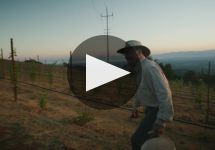Ridge Lytton Springs Red Blend 2007
-
Robert
Parker -
Connoisseurs'
Guide -
Wine &
Spirits
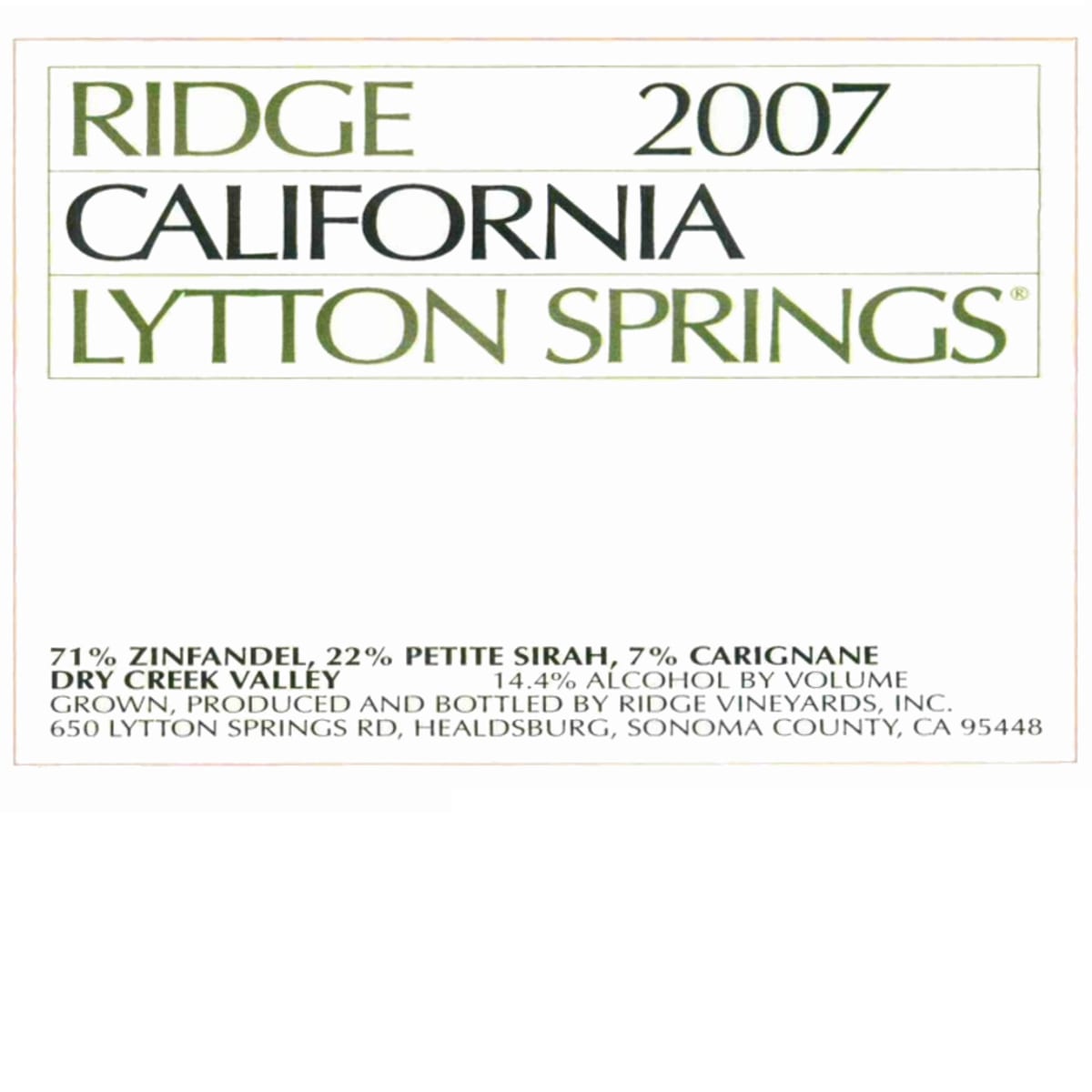

Product Details
Your Rating
Somm Note
Winemaker Notes
After a dry winter and spring, budbreak came early. Despite the lack of spring rain, temperate summer weather mitigated vine stress and created ideal ripening conditions. At veraison, we dropped a quarter of the young zinfandel. A warm August ripened the fruit earlier than expected, and we harvested the thirtyfour parcels as flavors developed fully, fermenting each separately on its natural yeasts. Color and tannin extracted easily, reducing maceration time to seven days, on average. After malolactic, we chose twenty-one lots for this year's wine. Aged for fifteen months in air-dried american oak, this classic Lytton Springs is remarkable for its richness, balance, and elegant texture. It will soften and gain complexity over the next ten years.
Professional Ratings
-
Robert Parker's Wine Advocate
The 2007 Lytton Springs Proprietary Red (71% Zinfandel, 22% Petite Sirah, and 7% Carignan; 14.4% alcohol) exhibits a similar dark ruby/purple hue as well as more black fruits and spice in the impressive aromatics. It is a fuller-bodied, richer wine with beautiful texture, purity, and length. Enjoy it over the next 7-10 years.
-
Connoisseurs' Guide
71% Zinfandel; 22% Petite Sirah; 7% Carignane. Ripe enough to push its berryish fruit in the direction of high concentration, this wine pulls back from the brink with layered notes of pepper and slightly toasty, never pushy oak. Its solid yet quietly brawny side shows in latter palate tannins and firming acidity, and what starts out as a generous wine in the nose, turns tighter and quite age-demanding in the mouth. Do not be afraid to put this one aside for three to six years.
-
Wine & Spirits
This starts with the sweet richness of Dry Creek zin, with plush, candied fruit that turns savory as tannins darken the wine into the finish. It ends with lovely briskness, a fine balance between the fruit sweetness and the tannin. With age, the earthy complexities of the wine should evolve.
Other Vintages
2022-
Wilfred
Wong -
Wine
Enthusiast -
James
Suckling - Decanter
-
Wine
Spectator -
Robert
Parker - Vinous
- Vinous
-
Wilfred
Wong -
Jeb
Dunnuck -
Wine
Spectator
-
Wine
Enthusiast -
James
Suckling - Decanter
-
Wilfred
Wong - Vinous
-
Wine
Spectator -
Wine &
Spirits
-
Wilfred
Wong - Vinous
-
Wine
Enthusiast -
Jeb
Dunnuck -
Connoisseurs'
Guide -
Wine
Spectator
-
Robert
Parker -
Wilfred
Wong -
Wine
Enthusiast -
Jeb
Dunnuck
-
Tasting
Panel -
Wilfred
Wong -
Robert
Parker -
Jeb
Dunnuck
-
James
Suckling -
Jeb
Dunnuck -
Wine
Spectator -
Robert
Parker -
Wine &
Spirits
-
Connoisseurs'
Guide -
Jeb
Dunnuck -
Wine
Spectator -
Wilfred
Wong
-
Wilfred
Wong -
Robert
Parker
-
Wilfred
Wong -
Tasting
Panel -
Robert
Parker -
Wine
Spectator
-
Wilfred
Wong -
Connoisseurs'
Guide
-
Tasting
Panel
-
Robert
Parker
-
Connoisseurs'
Guide -
Wilfred
Wong -
Robert
Parker -
Wine &
Spirits -
Wine
Spectator
-
Wine
Spectator -
Connoisseurs'
Guide -
Jeb
Dunnuck -
Robert
Parker
-
Wine &
Spirits -
Robert
Parker
-
Robert
Parker
-
Wine
Spectator -
Robert
Parker

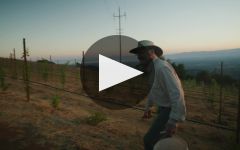
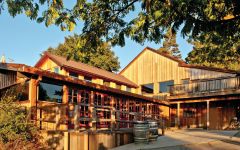

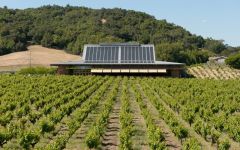
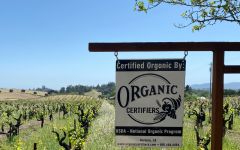
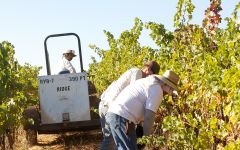
RIDGE's history begins in 1885, when Osea Perrone, a doctor and prominent member of San Francisco's Italian community, bought 180 acres near the top of Monte Bello Ridge in the Santa Cruz Mountains. He planted vineyards and constructed a winery of redwood and native limestone in time to produce the first vintage of Monte Bello in 1892. The historic building now serves as the RIDGE production facility.
In 1962, Ridge Vineyards made its first Monte Bello, and two years later its first zinfandel. The RIDGE approach is straightforward: find the most intense and flavorful grapes, guide the natural process, draw all the fruit's richness into the wine. Decisions on when to pick, when to press, when to rack, what varietals and what parcels to include and when to bottle, are based on taste. To retain the nuances that increase complexity, Ridge winemakers handle the grapes and wine as gently as possible. There are no recipes, only attention and sensitivity.
In August 2021, Ridge Vineyards joined International Wineries for Climate Action (IWCA), a group of like-minded wineries that are dedicated to decarbonizing the global wine industry. RIDGE is committed to achieving Net Zero by 2050 and completes a biannual greenhouse gas audit utilizing the World Resources Institute Greenhouse Gas (GHG) Protocol methodology and be verified by an internationally accredited, third-party auditor.

With hundreds of red grape varieties to choose from, winemakers have the freedom to create a virtually endless assortment of blended red wines. In many European regions, strict laws are in place determining the set of varieties that may be used, but in the New World, experimentation is permitted and encouraged resulting in a wide variety of red wine styles. Blending can be utilized to enhance balance or create complexity, lending different layers of flavors and aromas. For example, a red wine blend variety that creates a fruity and full-bodied wine would do well combined with one that is naturally high in acidity and tannins. Sometimes small amounts of a particular variety are added to boost color or aromatics. Blending can take place before or after fermentation, with the latter, more popular option giving more control to the winemaker over the final qualities of the wine.
How to Serve Red Wine
A common piece of advice is to serve red wine at “room temperature,” but this suggestion is imprecise. After all, room temperature in January is likely to be quite different than in August, even considering the possible effect of central heating and air conditioning systems. The proper temperature to aim for is 55° F to 60° F for lighter-bodied reds and 60° F to 65° F for fuller-bodied wines.
How Long Does Red Wine Last?
Once opened and re-corked, a bottle stored in a cool, dark environment (like your fridge) will stay fresh and nicely drinkable for a day or two. There are products available that can extend that period by a couple of days. As for unopened bottles, optimal storage means keeping them on their sides in a moderately humid environment at about 57° F. Red wines stored in this manner will stay good – and possibly improve – for anywhere from one year to multiple decades. Assessing how long to hold on to a bottle is a complicated science. If you are planning long-term storage of your reds, seek the advice of a wine professional.

Home to a diverse array of smaller AVAs with varied microclimates and soil types, Sonoma County has something for every wine lover. Physically twice as large as Napa Valley, the region only produces about half the amount of wine but boasts both tremendous quality and variety. With its laid-back atmosphere and down-to-earth attitude, the wineries of Sonoma are appreciated by wine tourists for their friendliness and approachability. The entire county intends to become a 100% sustainable winegrowing region by 2019.
Sonoma County wines are produced with carefully selected grape varieties to reflect the best attributes of their sites—Dry Creek Valley’s consistent sunshine is ideal for Zinfandel, while the warm Alexander Valley is responsible for rich, voluptuous red wines like Cabernet Sauvignon. Chardonnay and Pinot Noir are important throughout the county, most notably in the cooler AVAs of Russian River, Sonoma Coast and Carneros. Sauvignon Blanc, Merlot and Syrah have also found a firm footing here.
